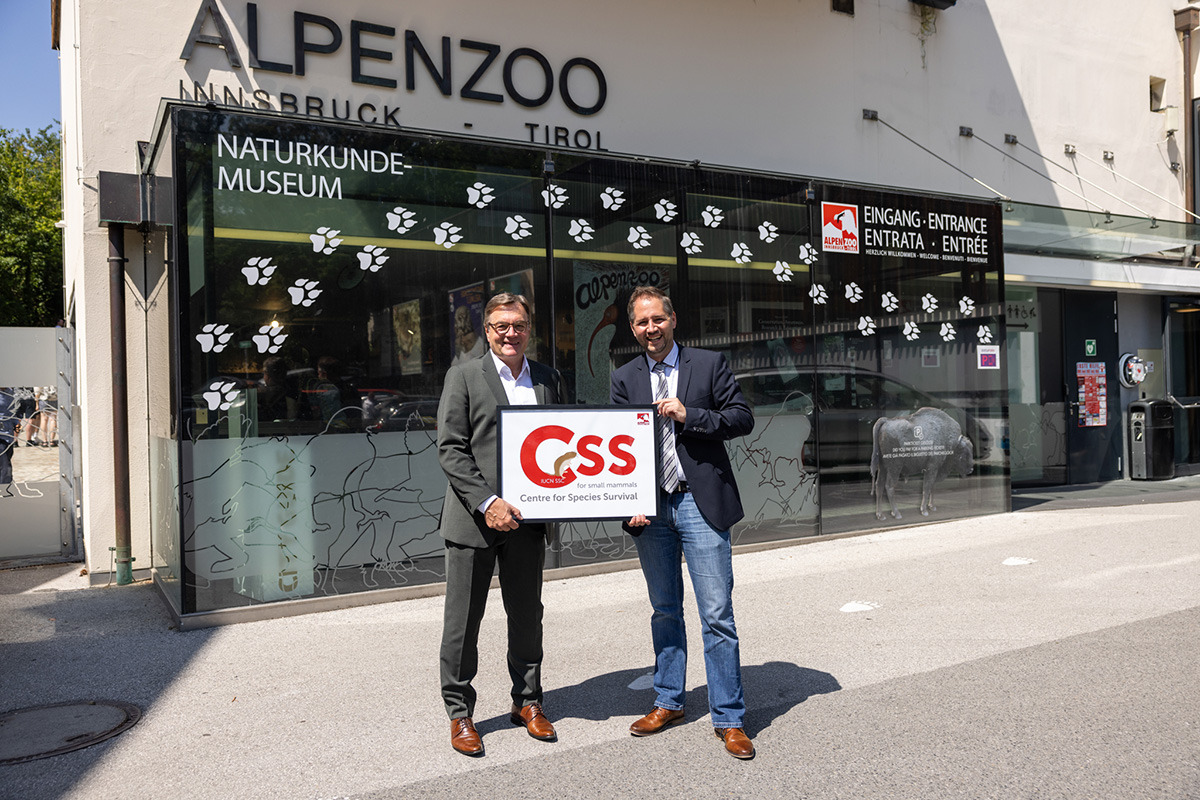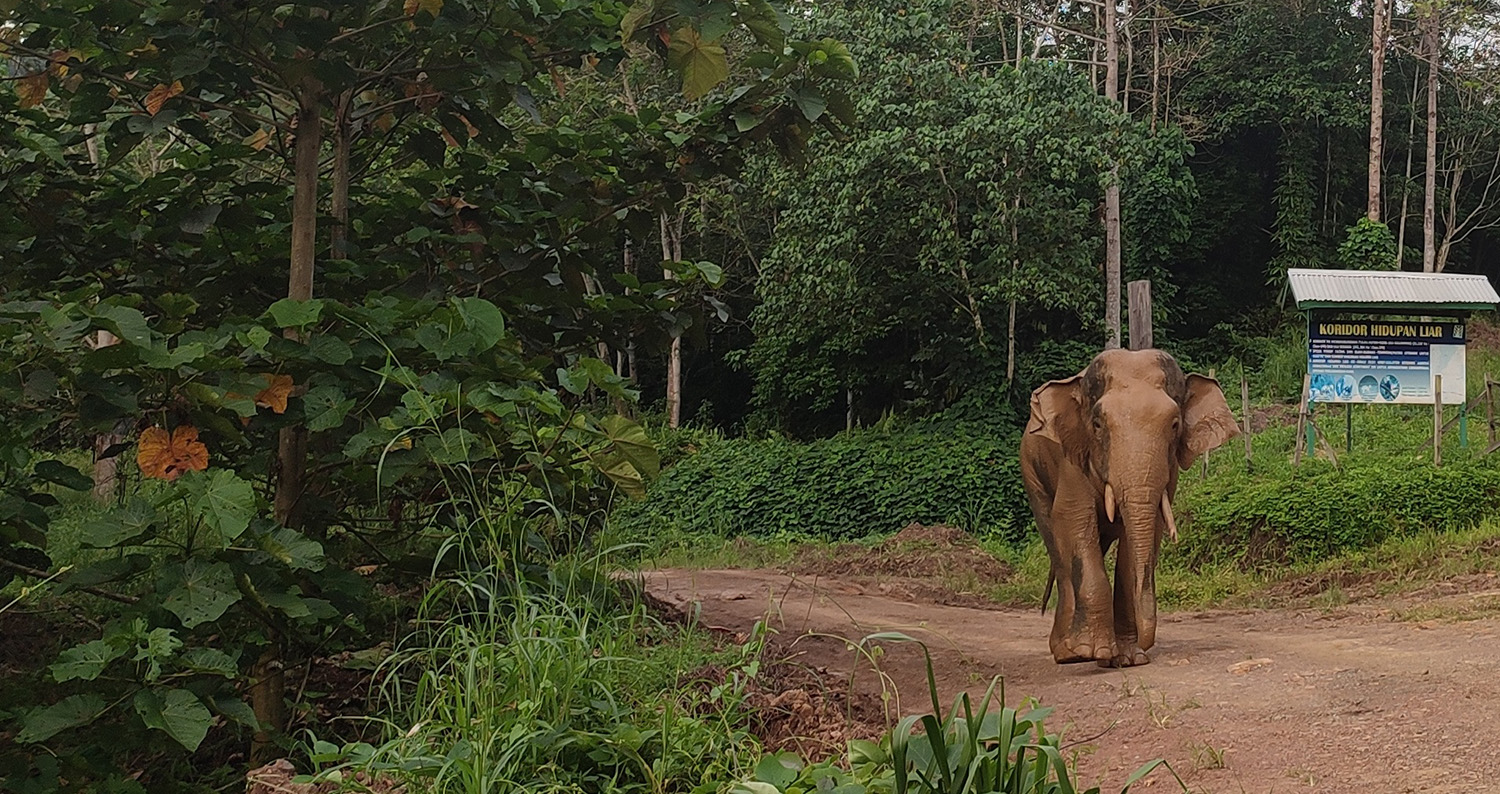Community-engagement to conserve Endangered Javan Silvery Gibbons in Indonesia
The conservation of the Javan silvery gibbon through rehabilitation, population re-enforcement and habitat protection to re-establish viable and self-sustainable populations of the species.
The project ‘rehabilitating and reintroducing Javan silvery gibbons’ is run by The Aspinall Foundation Indonesia in partnership with the Ministry of Environment and Forestry, the Republic of Indonesia cq Balai Besar Konservasi Sumber Daya Alam or BBKSDA (The Natural Resources Conservation Bureau), of West Java. The project received funding from the IUCN Save Our Species' SOS Gibbons initiative, with the goal to rehabilitate and release the Javan gibbons into protected areas such as Mount Tilu Nature Reserve in Java, Indonesia.
The Javan gibbon (Hylobates moloch), is classified as Endangered on the IUCN Red List of Threatened Species and is at high risk of extinction due to the illegal pet trade, hunting, habitat loss and forest fragmentation. Java is one of the most densely populated areas in the world and this species only exists in Java. It is estimated that less than 2,500 Silvery Gibbons remain in the wild.
With support from IUCN Save Our Species over the two-year project period, a total of 17 gibbons were successfully rewilded. The rehabilitation centre opened in 2011 and has received a total of 71 wild and captive-born Javan gibbons, 55 of which have been released back to the wild as of November 2022.
 Photo: Javan silvery gibbon © IUCN Asia/Alexander McWilliam
Photo: Javan silvery gibbon © IUCN Asia/Alexander McWilliam
IUCN visit the Aspinall Foundation Indonesia
To assess and monitor the ongoing achievements of the project and its future plan, the SOS Gibbons initiative team from the IUCN Asia Regional Office in Bangkok visited the Aspinall Foundation’s rehabilitation centre in West Java, Indonesia at the end of February 2023.
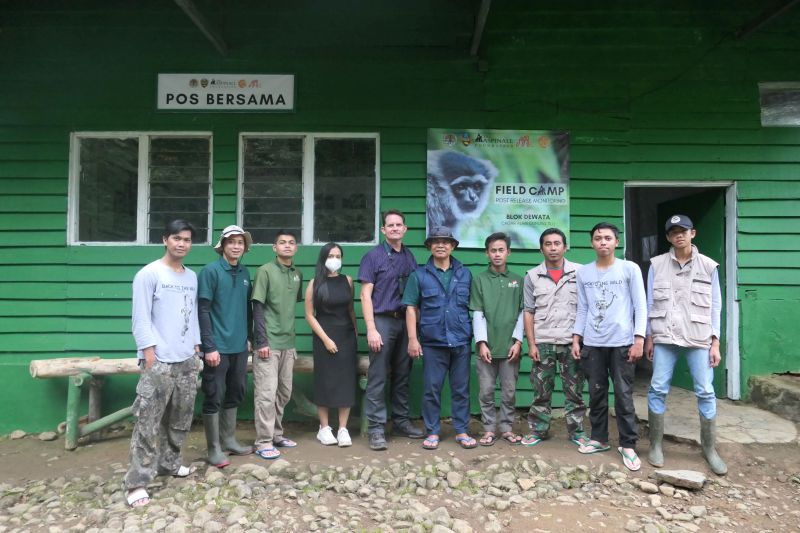 Photo: IUCN Asia Regional Office visit the Aspinall Foundation Indonesia © IUCN Asia
Photo: IUCN Asia Regional Office visit the Aspinall Foundation Indonesia © IUCN Asia
During the visit, the SOS Gibbons team went to see the rescued Javan gibbons at the rehabilitation centre and observe how they were adapting to the environment. IUCN also met with the monitoring and patrolling team to better understand the daily monitoring activities of the gibbons, as well as meeting with the on-site vets and caretakers who look after the gibbon’s health, nutrition and enclosures.
Once the animals arrive at the Javan Primate Rehabilitation Centre (JPRC), they are screened and undergo an extensive medical examination by the on-site vets to check their overall medical condition and ensure they are free from disease. This includes gibbons received locally in Indonesia and several gibbons to be repatriated from the United Kingdom. This is an essential process to ensure that the gibbons are healthy and can successfully socialise with other primates prior to their release.
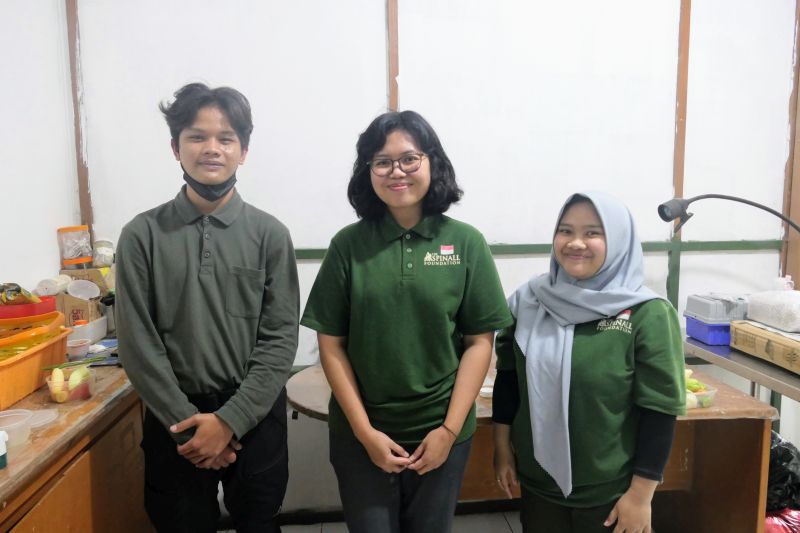 Photo: The Aspinall Foundation Indonesia team © IUCN Asia/Noor Ali
Photo: The Aspinall Foundation Indonesia team © IUCN Asia/Noor Ali
During this time, the gibbons go through a long process of rehabilitation, designed to enable their adjustment to normal behaviour patterns. This requires supplying proper feeding, space for movement, socialisation and possibly pairing with other gibbons prior to release. Once ready they will remain in the habituation cage at the release site for at least 1 or 2 weeks for final habituation with the forest environment before being released into the wild. After the selected gibbons have been released, they will be frequently monitored to assess their overall condition, mapping daily range movement, wild food consumption / selection and how well they have adapted to their new environment.
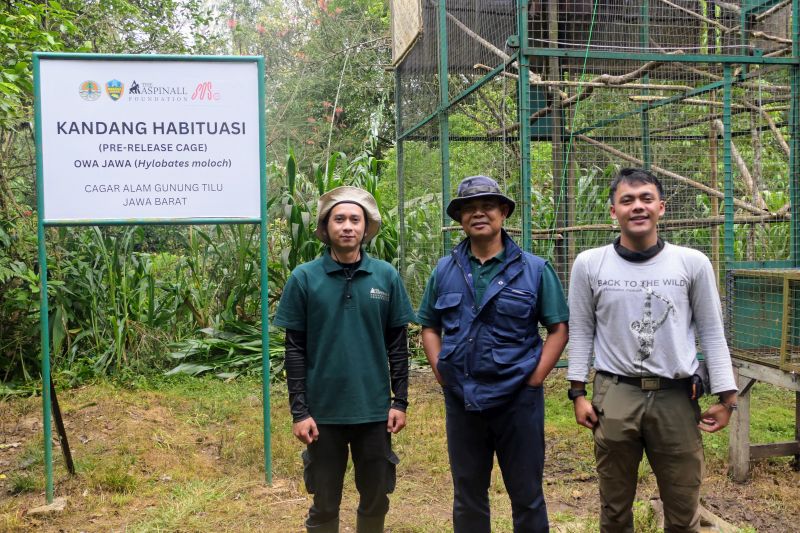 Photo: The Aspinall Foundation Indonesia team at the gibbon pre-release site © IUCN Asia/Noor Ali
Photo: The Aspinall Foundation Indonesia team at the gibbon pre-release site © IUCN Asia/Noor Ali
Daily monitoring of the Javan gibbon
The project staff and monitoring team who support with the monitoring of primates post-release are comprised of local people, youth and forest rangers from the local communities in and around the project site.
The monitoring team start their day at 7 am to venture off to the gibbon release sites to track and monitor gibbon activity on a daily basis. Some of these sites are quite far from the base camp, and require a long hike to get to where the gibbons are released. The team are responsible for observing and recording the general behaviour of the gibbons, which includes mapping their daily movements, what they eat, how they interact with other gibbons, sounds and gibbon calling.
The data on gibbons is manually collected from the field and is then organized and analysed by the Aspinall Foundation team. However, tracking gibbons on a daily basis can pose a challenge due to Mount Tilu’s mountainous and hilly terrain with steep slopes.
I am happy to see that the rehabilitated gibbons have adapted well to the forest after being released into the wild and some of them have already given birth to new baby gibbons. – Yana, monitoring and community forest ranger at the Mount Tilu NR and part of the Patrolling team.
The Aspinall Foundation team along with BBKSDA rangers and local community members combine monitoring and patrolling efforts in the Mount Tilu Nature Reserve and enhance the protection of Javan Gibbons in the area. – Made Wedana, Country Director at The Aspinall Foundation Indonesia
Education and Community-Awareness Programme
The Aspinall Foundation team in Indonesia work closely with local communities at the project sites and carry out awareness-raising of conservation issues at Mt. Tilu Nature Reserve, and the laws related to protected areas, alongside the BBKSDA (The Natural Resources Conservation Bureau of West Java), Ministry of Environment and Forestry, RoI.
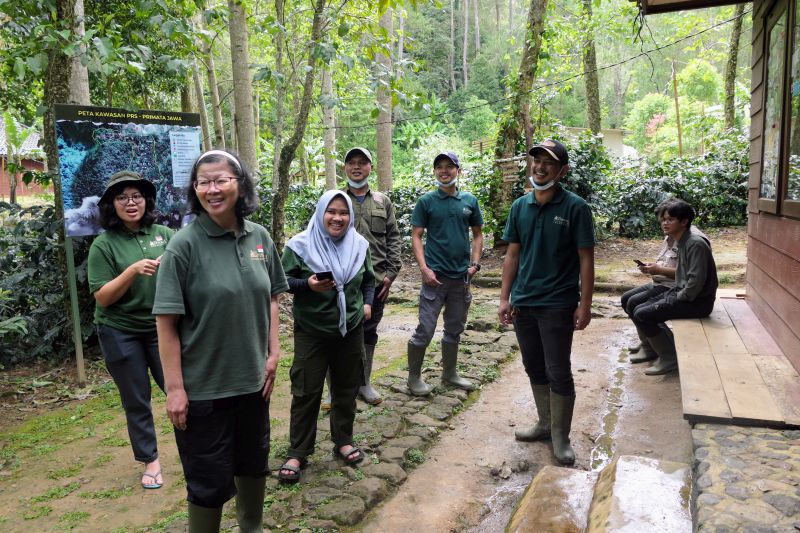 Photo: The Aspinall Foundation Indonesia team © IUCN Asia/Noor Ali
Photo: The Aspinall Foundation Indonesia team © IUCN Asia/Noor Ali
The awareness-raising sessions are also conducted at schools and universities in Indonesia to educate the students on conservation issues and promote their direct involvement in the project through internships and volunteering opportunities. With this unique exposure, the students are able to develop their knowledge of Javan gibbon conservation by supporting the monitoring and research activities at the gibbon release sites. Eventually, they may choose to follow a career path in conservation by gaining relevant field work experience which would prove valuable to the students.
Going forward
The Javan gibbon conservation project will continue with more releases planned in 2023 and beyond. It will also empower community rangers through capacity-building training on various aspects of species protection management including gibbon conservation methods, patrolling and monitoring of the gibbons post-release, and awareness campaigns to better conserve and protect the Javan gibbon species in Indonesia.
